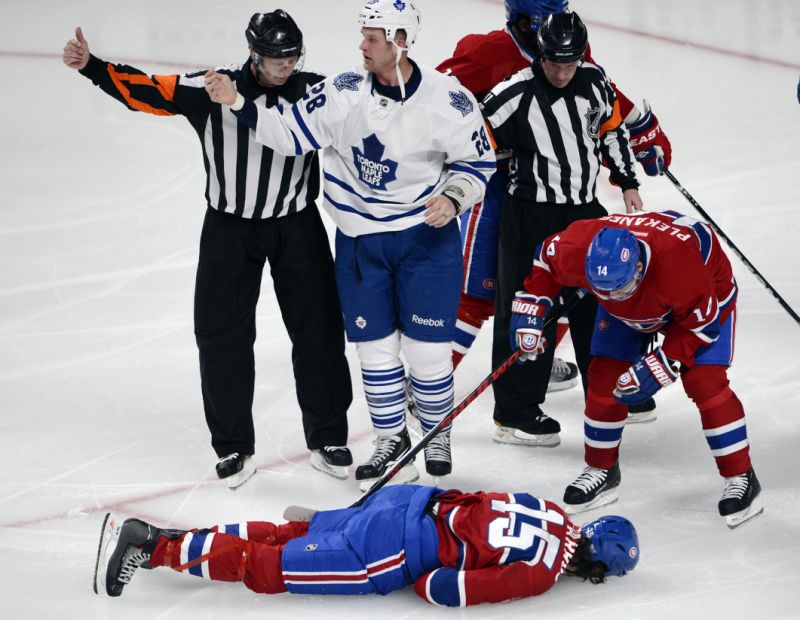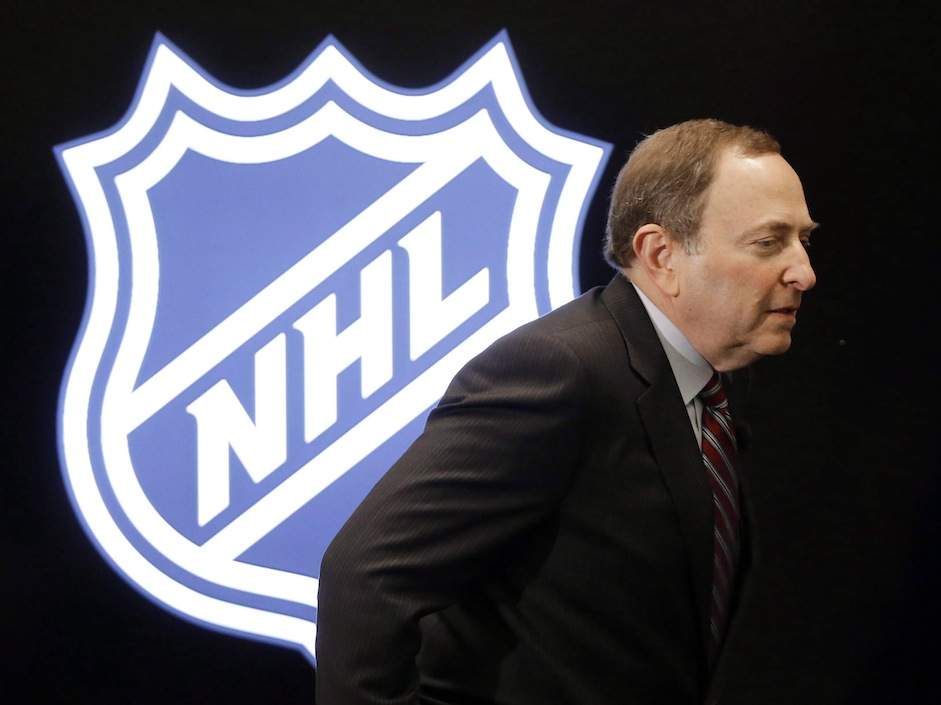
The NFL has been criticized both for the amount of money it has donated for head trauma research and trying to manipulate how it is spent.
But at least it has donated.
The NHL has not given money to any of the four centers leading research into neurodegenerative diseases, specifically the question of why so many football and hockey players develop chronic traumatic encephalopathy (CTE), USA TODAY Sports has found. Boston University, North Carolina, the National Institutes of Health and the University of Western Ontario all were asked for details about which sports organizations have helped fund their research, and the NHL was not mentioned in any of their responses.
Western Ontario did get $500,000 in hockey-related money in August 2015, but it came from the NHL Players Association.
“We’re not asking for money. That’s not what we want. What we’re asking for is money to be donated to research, money for medical monitoring for guys who need treatment,” said Dale Purinton, who is one of more than 100 former players accusing the NHL in a class-action lawsuit of failing to protect them from brain injuries or educate them about the risks of repetitive head trauma.
“This is an organization that makes billions of dollars and yet, when you’re not valuable, they just toss you away,” said Purinton, who racked up 578 penalty minutes in 181 games with the New York Rangers. “As soon as you’re done playing, you’re just disregarded.”
The NHL said it could not comment, citing the pending lawsuit. Former players began suing the $4 billion league in 2013, and the lawsuits were eventually consolidated in the U.S. District Court of Minnesota.
The NFL has long been the focus of the CTE crisis. Retirees and their loved ones have told heartbreaking stories of mood swings, dementia and, in the worst cases, suicide. Signs of CTE have been found in the brains of all but four of the 95 former players examined by Ann McKee, the neuropathologist who heads up Boston University’s CTE Program, which is run in conjunction with the Department of Veteran Affairs.
But the lawsuit against the NHL makes a similar case to what NFL retirees claimed: That the league either knew or should have known that the bruising hits players took day after day, game after game, year after year, could lead to debilitating brain trauma. Of the five former NHL players whose brains McKee has examined, all five had CTE.
Those who are still alive complain of, among other things, headaches, memory loss, sensitivity to light and changes in temperament. Purinton said he served four months at a maximum-security prison in New York last year after being arrested for burglary and assault, an incident he blames on the drugs and alcohol he abused to deal with his head injuries.
“After meeting these (former players) who feel pretty much abandoned and ignored and taken advantage of and scared and facing what clearly seem to be the symptoms of CTE, clearly this is an issue for hockey, as well,” said U.S. Rep. Jan Schakowsky, D-Ill., a member of the House Committee on Energy and Commerce that has questioned league officials about their response to head trauma.
“It may be equally an issue — and one that has not come to light as much as it has in football,” Schakowsky added.
Though the NFL settled its concussion lawsuit for $1 billion and has grudgingly, if not quietly, acknowledged a link between repetitive head trauma and CTE, the NHL remains defiant. It has said it will fight the lawsuit, and last week asked a federal judge to force Boston University to turn over records related to its research, including the identities of all players who donated or have agreed to donate their brains.
A hearing on the motion is scheduled for Feb. 17.

Meanwhile, NHL commissioner Gary Bettman has continued to deny a link between repetitive head trauma and neurodegenerative diseases such as CTE, saying the science is still developing and there’s no definitive proof yet.
“As you are likely aware, the most recent Consensus Statement on Concussion in Sport concluded that, ‘The speculation that repeated concussions or sub-concussive impacts causes CTE remains unproven,’ ” Bettman wrote in an Oct. 24, 2016, letter to the House committee. “Likewise, the ‘2015 Consensus Document’ you cite itself highlights that there are many ‘gaps’ in the CTE research.
“Please be assured that medical consultants for both the NHL and NHLPA follow the research closely and have done so for many years in conjunction with the NHL/NHLPA Concussion Program,” Bettman added.
That attitude infuriates several former players and troubles Schakowsky. They say the autopsy results at BU and other facilities, along with other research, provide enough evidence of a link between repetitive head trauma and CTE even if there is not yet direct proof.
And even the NHL’s own actions suggest it considers head trauma a serious problem. Earlier this season, the league added Central League Spotters to monitor all games for players who might need to be evaluated. It also authorized on-ice officials to order the removal of a player for evaluation.
Teams that violate the NHL’s concussion protocol are fined a minimum of $25,000, with fines rising for each offense.
“I think this situation will probably get resolved one way or another, with (Bettman’s) cooperation or not,” said Jeff Parker, who lost his sense of smell and has memory issues after spending parts of five seasons as a right wing for the Buffalo Sabres and Hartford Whalers.
“But it doesn’t make him look very good, I don’t think.”
It’s true that the NHL works closely with several physicians and medical personnel whose focus is on head trauma. Willem Meeuwisse, who helped organize the most recent International Consensus Conference on Concussion in Sport last October, is a member of the NHL/NHLPA’s Concussion Working Group.
But if the health and safety of its players, past and present, matters to the NHL as much as Bettman claims, there’s an easy way to prove that. Write a check, as organizations like the NFL and NCAA have done.
Better yet, write several.
By Nancy Armour
This article was republished with permission from the original author and 2015 Ronald Reagan Media Award recipient, Nancy Armour, and the original publisher, USA Today. Follow columnist Nancy Armour on Twitter @nrarmour.